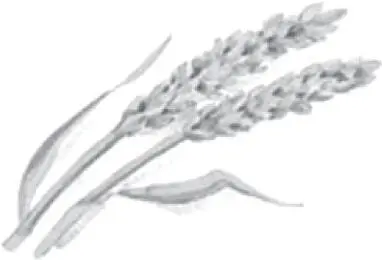 Industry highlight boxes Introgression breeding on tomatoes for resistance to powdery mildew
Industry highlight boxes Introgression breeding on tomatoes for resistance to powdery mildew
Yuling Bai
Wageningen UR Plant Breeding, Droevendaalsesteeg 1, 6708 PB, Wageningen, The Netherlands
Tomato and its wild relatives
Tomato ( Solanum lycopersicum ) is very important vegetable both for the fresh market and for the processed food industry. Although cultivated as an annual, tomato grows as a perennial in its original habitat in Peru (Picken et al. 1985). The original site of domestication of tomato is likely in Mexico (Taylor 1986).
According the recent classification, tomato belongs to section Lycopersicon and has 12 wild relatives ( Table B5.1). Of these 12 relatives, nine (no. 1 to 9 in Table B5.1) are previously defined in the genus of Lycopersicon (refer to as old Lycopersicon species). Accessions of nearly all these nine species have been successfully used to introduce valuable traits for crop improvement, especially monogenic sources conferring resistance to fungal, nematode, bacterial, and viral diseases. (Kiss, L. and Takamatsu, S. 2005). The phelogenic relation of these old Lycopersicon species with cultivated tomato has been extensively studied, based on comparative analysis of morphology, self‐compatibility, crossability, and molecular markers. The classical taxonomic characters which have been used to divide old Lycopersicon species are fruit color and self‐compatibility. In the phylogeny generated with molecular markers, different patterns of species relationships have been obtained, some of which are congruent with results of classical taxonomy and others add resolution to new divisions that are always in agreement. In general, we could conclude the following (i) species ( S. lycopersicum, S. lycopersicum var cerasiforme, Solanum cheesmaniae, Solanum pimpinellifolium ) with self‐compatibility and red fruits; (ii) Solanum peruvianum and Solanum chilense (green fruits and self‐incompatible) are closely related species; and (iii) species with green fruits, including Solanum chmielewskii , Solanum neorikii , Solanum habrochaites, and Solanum pennellii , have varied relationships with the rest depending on markers used for phylogeny.
Table B5.1Old and new names of tomato and its wild relatives.
| No. |
New Solanum name |
Lycopersicon equivalent |
Fruit color |
Self‐compatibility |
Ability to be crossed with other Solanum species |
Section name within Solanum |
| 1 |
Solanum lycopersicum |
Lycopersicon esculentum |
Red |
Self‐compatible |
Old “ esculentum ” group, crossable among these species, although it is sometimes only possible in one direction to make crosses |
Section Lycopersicon |
| 2 |
S. pimpinellifolium |
L. pimpinellifolium |
Red |
| 3 |
S. cheesmaniae |
L. cheesmaniae |
yellow |
| 4 |
S. chmielewskii |
L. chmeilewskii |
Green |
| 5 |
S. neorickii |
L. parviflorum |
Green |
| 6 |
S. habrochaites |
L. hirsutum |
Green |
Self‐incompatible |
| 7 |
S. pennellii |
L. pennellii |
Green |
| 8 |
S. chilense |
L. chilense |
Green |
Old “ peruvianum ” group, crossable between these two species, but difficult to cross them with cultivated tomato and embryo rescue is often needed |
| 9 |
S. peruvianum |
L. peruvianum |
Green |
| 10 |
S. lycopersicoides |
L. lycopersicoides |
Green‐black |
Most closely related to old Lycopersicon species and crossable to S. lycopersicum, S. cheesmaniae, S. pimpinellifolium, and S. pennellii |
| 11 |
S. sitiens |
L. sitiens |
Green |
Also known as S. rickii , Crossable with S. lycopersicoides |
| 12 |
S. ochranthum |
L. ochranthum |
Green |
Unknown crossability with other Solanum species |
Section Juglandifolium |
| 13 |
S. juglandifolium |
L. juglandifolium |
Green |
Unknown crossability with other Solanum species |
Wild tomatoes have large genetic diversity, especially within the self‐incompatible species like S. chilense and S. peruvianum (Rick 1986). Tremendous variation has been revealed by molecular markers and it is striking that more genetic variation was observed within a single accession of the self‐incompatible species than in all accessions of any of the self‐compatible species (Egashira et al. 2000). Compared to the rich reservoir in wild species, the cultivated tomato is genetically poor due to the inbreeding during tomato domestication. It is estimated that the genomes of tomato cultivars contain less than 5% of the genetic variation of their wild relatives. The lack of diversity in the cultivated tomato can be visualized using DNA technologies. Very few polymorphisms within the cultivated tomato gene‐pool are identified, even using sensitive molecular markers. Tomato domestication experienced severe genetic bottleneck as the crop was carried from the Andes to Central America and from there to Europe. The initial domestication process was, in part, reached by selecting preferred genotypes in the existing germplasm. Selection of a horticultural crop like tomato is usually done on a single plant basis and with small numbers of selected plants. In a predominantly inbreeding species, genetic variation tends to decrease, even without selection. As a consequence, genetic drift is a major process that reduces genetic variation.
Most likely, no exchange of genetic information with the wild germplasm took place until the 1940s. By then, the renowned geneticist and plant breeder Charlie Rick (University of California, Davis) observed that crosses between wild and cultivated species generated a wild array of novel genetic variation in the offspring. Since then, breeding from wild species via interspecific crosses and followed by many times of backcrosses to cultivated tomatoes (so‐called introgression breeding), has led to the transfer of many favorable attributes in the cultivated tomato. Breeding barriers are sometimes expected in interspecific crosses, which include unilateral incompatibility, hybrid inviability, sterility, reduced recombination, and linkage drag.
An example of introgression breeding
One of the common breeding objectives in tomato is breeding for resistance to the most destructive pests and pathogens. Tomato hosts more than 200 species of a wide variety of pests and pathogens that can cause significant economic losses. Tomato powdery mildew caused by Oidium neolycopersici occurred for the first time in 1986 in The Netherlands (Paternotte 1988). Within 10 years it had spread to all European countries and is nowadays a worldwide tomato disease, except for Australia where another species ( O. lycopersici) occurs (Kiss et al. 2001). Upon the outbreak of O. neolycopersici , all tomato cultivars were susceptible and this fungus was the only one to be controlled by fungicides in greenhouse tomato production in Northwest Europe (Huang et al. 2000). By 1996, our group was invited by Dutch vegetable seed companies to search for resistance genes against O. neolycopersici . Here I will use our practice on breeding tomatoes with resistance to powdery mildew as an example for introgression breeding.
Читать дальше

 Industry highlight boxes Introgression breeding on tomatoes for resistance to powdery mildew
Industry highlight boxes Introgression breeding on tomatoes for resistance to powdery mildew










